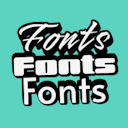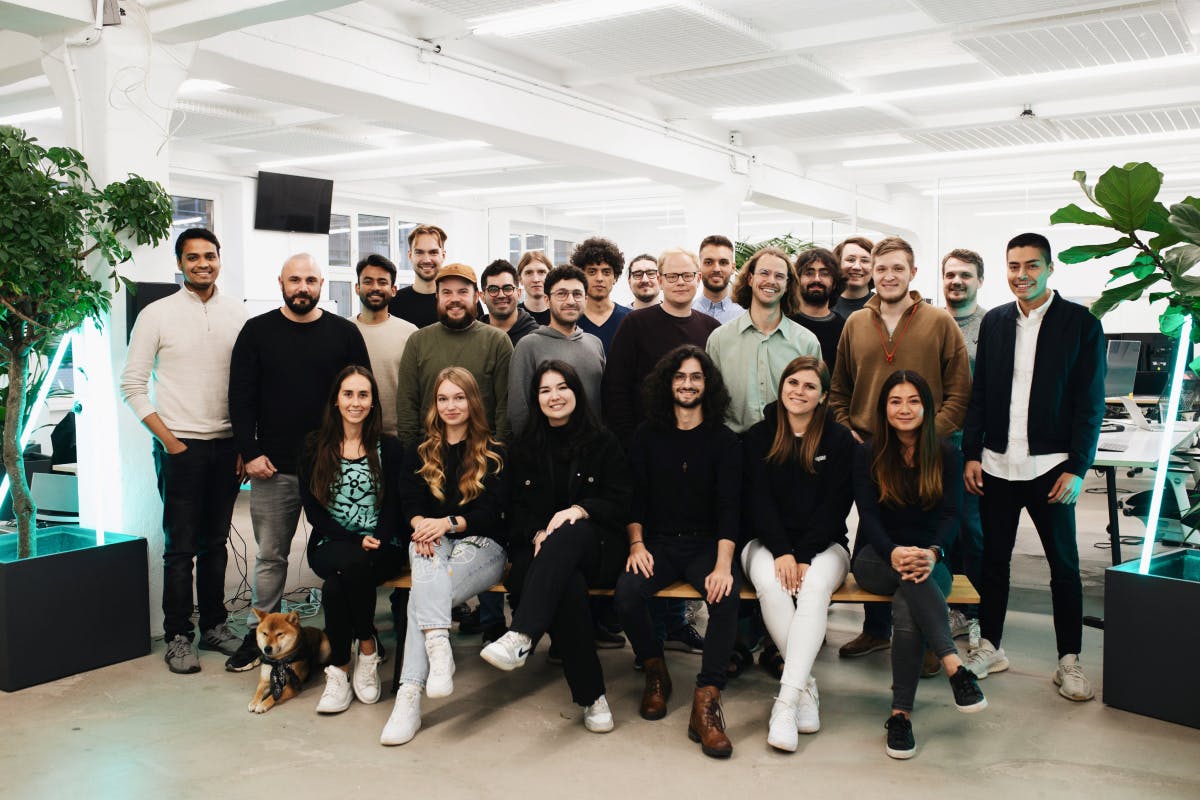Product
Templates
Resources
Company
Home
Blog
Design
Minimalist logo design: When less becomes a whole lot more
Minimalist logo design: When less becomes a whole lot more
Have you ever felt like you’re drowning in visual noise? I do. I mean, our Instagram feed is a kaleidoscope of colors, our inboxes are bursting with flashy newsletters, and let’s not even talk about the signs we see in the street.
And in all this chaos, what stands out? The breath of fresh air, minimalist designs, and especially minimalist logos.
But what is a minimalist logo, really? Is it just slapping some black text on a white background and calling it a day? And why are brands from Apple to Airbnb obsessed with stripping down their visual identity to the bare essentials?
Grab your favorite monochromatic beverage—we're diving into the world where less becomes so much more.
Ready to simplify? Pour it all into your canvas here
What is a minimalist logo?
Every designer has heard a client say: "I want something clean and simple—you know, minimalist." Internal screaming intensifies.
But what is a minimalist logo actually? It's not just a basic design created by someone who forgot to finish. A true minimalist logo is a masterclass in visual reduction—keeping only what's absolutely essential while still communicating your brand's entire personality.
It's like Marie Kondo for your visual identity: "Does this gradient spark joy? No? OUT IT GOES."
The minimalist brand logo philosophy emerged from the "less is more" design movement (thanks, Ludwig Mies van der Rohe, for both the phrase and those impossibly clean buildings).
Today, it stands as the antidote to our visually overloaded world.
Think about it: When was the last time you saw a coffee shop's minimalist logo with seventeen colors and a detailed illustration of a barista wrestling with a coffee bean? Exactly. Those clean, simple marks speak volumes without shouting.
Minimalist logos didn’t appear out of thin air. Dive into our Bauhaus article to see how this iconic design movement helped strip branding down to its bold, beautiful essentials.
Why minimalist logos work so well
Our brains are lazy. Sorry, but it's true! It processes simple visual information faster than complex stuff—it's just how we're wired. This cognitive shortcut explains why modern minimalist logo design has conquered the corporate landscape faster than free donuts disappear in a design agency.
They’re instantly recognizable
Nike's swoosh. Apple's... well, apple. Twitter's bird (RIP, now it's just "X"—the ultimate minimalism?).
These brands don't need to explain themselves. Their minimalist logos are shorthand for their entire identity. In the 0.7 seconds someone glances at your Instagram minimalist logo in their feed, you want them thinking "oh, that cool brand" not "what's that blob supposed to be?"
They work everywhere—literally
From favicon to billboard, minimalist logos scale without losing their identity. Try putting your detailed illustration of a phoenix rising from ashes on a business card and watch it transform into what looks like a tragic chicken nugget accident.
The coffee shop minimalist logo trend isn't just about aesthetics—it's practical. That clean mark looks as good on a tiny coffee cup as it does on a store sign.
They tell people you’ve got it all together

Most of the time, a minimalist logo signals certain brand values without saying a word:
- "We're confident enough not to overcompensate with flashy graphics"
- "We focus on what matters (like our product/service quality)"
- "We're modern, thoughtful, and probably have a really nice office with plants"
Minimalist logo inspiration that works well for other brands
Look, we've all seen those "minimalist inspiration" posts that show logos so simple they could've been made by a toddler with a marker. Let's look at some real-world examples that prove minimalism can be clever, not just... empty.
Here's how some brands (and our talented Kittl community) nailed the minimalist approach:
Letterforms doing double duty
The FedEx logo's hidden arrow. The Amazon smile that connects A to Z. These lettermarks do more than just spell out a name—they tell a story in the negative space. It's like getting two logos for the price of one, and who doesn't love a BOGO deal?
Here’s some of our own examples for minimalist logos prioritizing type:
Geometric shapes that actually have meaning
Anyone can slap together some circles and call it a day. But the three overlapping circles of Mastercard? Those create a powerful Venn diagram of financial partnership. The Pinterest "P" formed from a folded pin? Genius connection to their core purpose.
Minimalist logo ideas don't have to be meaningless shapes—the best ones contain layers of symbolism that reward closer inspection. Like a good novel, but... you know, with fewer words and more circles.
Check out our own twists on this geometric-focused minimalist logo approach:
Line art that looks absolutely beautiful
The continuous line trend in minimalist logo examples is everywhere, but the standouts use this technique to create distinctive silhouettes:
- Airbnb's "belonging" symbol combines an A, a location pin, and a person with arms raised
- The WWF panda uses negative space to create an iconic wildlife symbol with minimal lines
- Apple Music's simple note symbol manages to feel both classic and contemporary
Or see more of our personal favorite minimalist logo templates you can instantly download here
Minimalist doesn't have to mean "made it in 5 minutes." Our designer community creates templates that are simple but sophisticated.
Browse our collection of ready-to-customize minimalist logo templates that prove less really is more (but still took serious design skills to create).
In a rush but still want that clean, minimalist vibe? Our AI logo generator can create custom minimalist designs in seconds. Tell it what you want, and it'll strip away the unnecessary fast.
How to make a minimalist logo for yourself
Ready to join the minimalist revolution? Whether you're a design pro or someone who thinks Pantone is a type of pasta, you can create your very own in any design skill level—especially with the right tools.
#1. Start with clear brand intention
Before opening any design tool, define what your brand truly stands for in 2-3 words. This clarity will guide every design decision and help you resist the temptation to add unnecessary elements. The Kittl Editor provides the perfect environment to translate these core concepts into visual form.
#2. Embrace the power of restraint
The most challenging aspect of minimalist design isn't what to add—it's what to leave out. Begin with either a blank canvas for complete creative freedom or one of our minimalist templates that already embody the "less is more" philosophy.
Either way, constantly ask: "Is this element essential to communicate my brand?"
Choose to go with the best template you’ve found in our content library? Here's some tips on how to customize it:
#3. Find the perfect typographic voice
Typography carries much of the weight in minimalist design. Select a font that speaks your brand's language—whether that's the quiet confidence of a clean sans-serif or the established elegance of a refined serif.
Remember that in minimalism, even the smallest typographic details become amplified in importance.
#4. Harness geometric precision
Minimalism isn't about being basic—it's about being intentional. That simple shape in your logo should have purpose and meaning. A circle isn't just a circle; it might represent unity, wholeness, or continuity for your brand. Make every element earn its place in your design.
#5. Master the art of visual breathing room
The space around your elements is as crucial as the elements themselves. As you work in the editor, resist the urge to fill every area. That emptiness creates visual impact and helps your essential elements stand out. Try this: finish your design, then increase the spacing by 20% and see how it transforms.
#6. Develop a purposeful color strategy
Limit yourself to 1-2 colors maximum. This restriction forces intentionality—that single accent color needs to work harder and say more. Consider how your chosen colors translate your brand attributes: Is that blue about trust, tranquility, or technology? Make each color choice deliberate.
#7. Test across contexts
A truly successful minimalist logo maintains its impact and legibility everywhere—from app icons to billboards. Before finalizing, preview your design at multiple sizes. What looks perfectly minimal at one scale might lose essential details at another. Make adjustments to ensure your logo's simplicity translates across all applications.
Need more tips? Check out our video about it here:
Minimalist logo nightmares to avoid
Let's learn from others' pain, shall we?
The "wait, isn't that...?" problem
When you strip designs down to their essence, there's a risk multiple brands land in similar territory. Your minimalist brand logo shouldn't make people say, "Isn't that just the Uber logo but sideways?"
The solution: Research your competition extensively. If everyone in your space is using circles, maybe explore squares or triangles (revolutionary concept, I know).
The “too minimal too function” trap

Some minimalist logos are so stripped down they lose all brand personality and recognition. If your minimalist logo is a black circle—just a plain black circle—you might have taken "less is more" a bit too literally.
The solution: Make sure your logo still communicates something unique about your brand. Minimalism isn't an excuse for being forgettable.
The “doesn’t scale” disaster

Some minimalist logo ideas look amazing on your 27-inch monitor but turn into unintelligible blobs at favicon size.
The solution: The "squint test"—if you can't recognize it when you squint, it won't work small. Test early and often at multiple sizes.
Your minimalist logo, well, your rules
Creating a minimalist logo isn't about following trends or stripping away personality—it's about finding the visual essence of your brand and expressing it with clarity and purpose.
Whether you use a minimalist logo maker, hire a designer, or venture into the AI minimalist logo generator frontier, remember that simplicity should never come at the expense of recognition or meaning.
The best minimalist logos say more with less, creating a visual shorthand that lets your brand stand out in a world where everyone is trying to outshout each other.
Ready to embrace minimalism? Start by defining what makes your brand tick, gathering minimalist logo inspiration that resonates with your vision, and then mercilessly eliminating everything that doesn't serve your core message.
Remember: in a world of visual noise, silence can be the most powerful statement of all.
Related articles

Design
What makes a good logo? Tips for effective branding
Logos are the heart of a brand’s identity—communicating everything from its offerings, personality, ...

Design
Bauhaus art in graphic design: Big shapes, bold colors, and surprisingly many decisions
As a German-based design platform, it feels borderline sinful not to talk about Bauhaus art. It’s th...

Tutorials
Create Minimal Logos Easily | Tutorial
Minimalist logo design is incredibly popular, especially with businesses that want to build a unique...


























